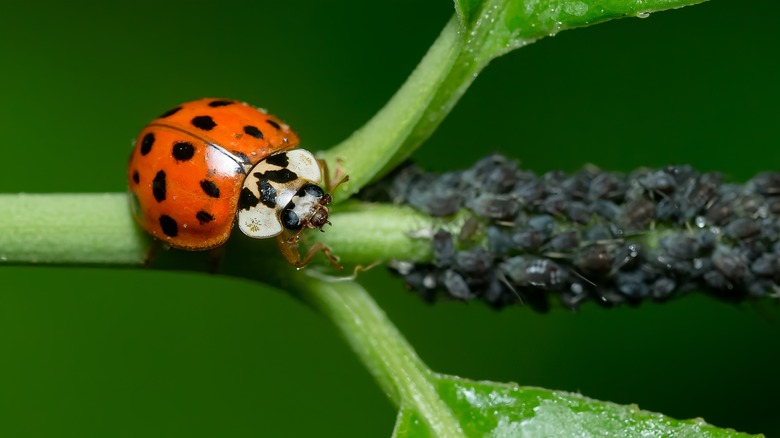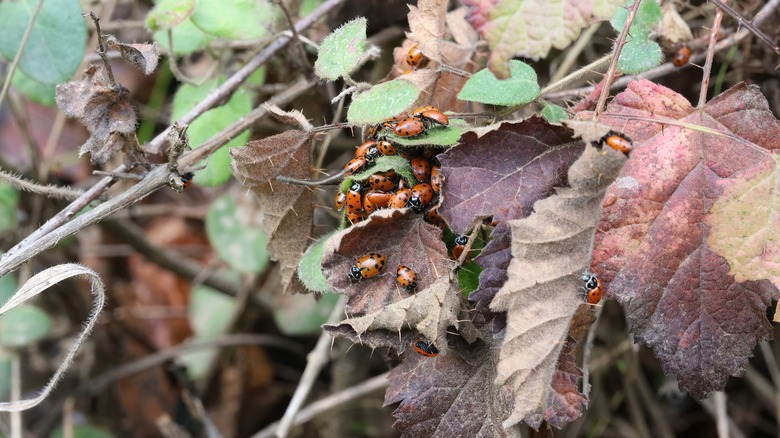Ladybugs Will Find A Home In Your Yard With This Cute DIY House
We may receive a commission on purchases made from links.
Gardeners typically see ladybugs as a godsend due to their aphid-eating habits. However, if there's a shortage of their preferred buffet, they'll turn to other pests like thrips and mites. They're handy little critters to have around, and they're also cute to look at! Ladybugs need a place to hibernate for the winter, and you can help them out by building them a house with pinecones. You can use a bee house with little crevices and fill the bottom part with pinecones, or you can create other types of homes if you don't already have a bee house.
However you decide to make your ladybug house, it must be dry, protected, and have consistent temperatures. Keep the house in a protected area that won't freeze and thaw repeatedly throughout winter. Give it a roof to keep the pinecones dry since the pinecones close up when they get wet. This great DIY project will allow you to use materials you already have around your home, so feel free to scavenge your backyard and get a little creative.
Turning a ladybug house into a ladybug home
There are so many ways you can make a ladybug house. If you want to keep it natural and simplistic, use a structured pile of pinecones. Collect them from a nearby tree, ensuring they're open. Connect them by pushing them together and wedge some twigs between them to hold the cones together. Find a safe location to place your pinecone-constructed house and leave it there for the winter. Partially cover it with leaves, wood, tiles, or whatever you have on hand to keep it dry.
If you prefer a more structured look, you can purchase something like the Insect Hotel XXL – for $25 on Amazon – which includes pinecones. You can go the DIY route with this kind of home, too. Build a structure similar to the Insect Hotel, or construct your ladybug's home much like a birdhouse and fill it with pinecones, rocks, tree bark, or leaves, leaving an open wall or two so the ladybugs can find it.
Make sure your ladybug home has a good roof to keep everything dry. Ladybugs often prefer a south-facing structure where it's the warmest, so try the southern part of your yard. If the ground isn't the safest option, try hanging it up on a tree or with a bird feeder hanger. Attract the ladybugs to their new home by leaving it near a flower bed, which will help them find it at the end of fall when they're ready to hibernate.
Why use pinecones?
While you're certainly not limited to pinecones when making a ladybug habitat, they're highly recommended because they cater to a ladybug's hibernation preferences. Ladybugs will either hibernate in solitude or with a large group, but either way, you can find them among hidey holes in sidewalks, houses, and trees. Pinecones with open scales provide plenty of crevices for single and large parties to hide in until the weather is warm again.
If you don't have pinecones, there are many other options. You can use leaves, rocks, mulch, sticks, and just about anything else you can find outdoors. If you build a ladybug house with walls, you can fill it up loosely with a mix of twigs and leaves to provide them plenty of space and protection from the elements. If you can attract groups of ladybugs, you're sure to see more of them as the warm weather rolls around since grouping up in winter makes it easier for them to find mates in the spring.

